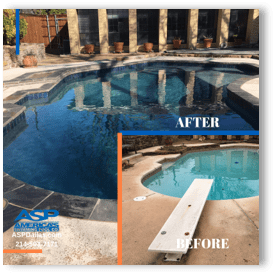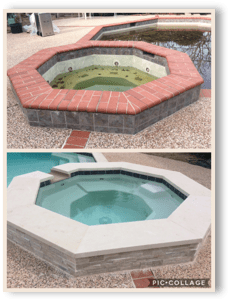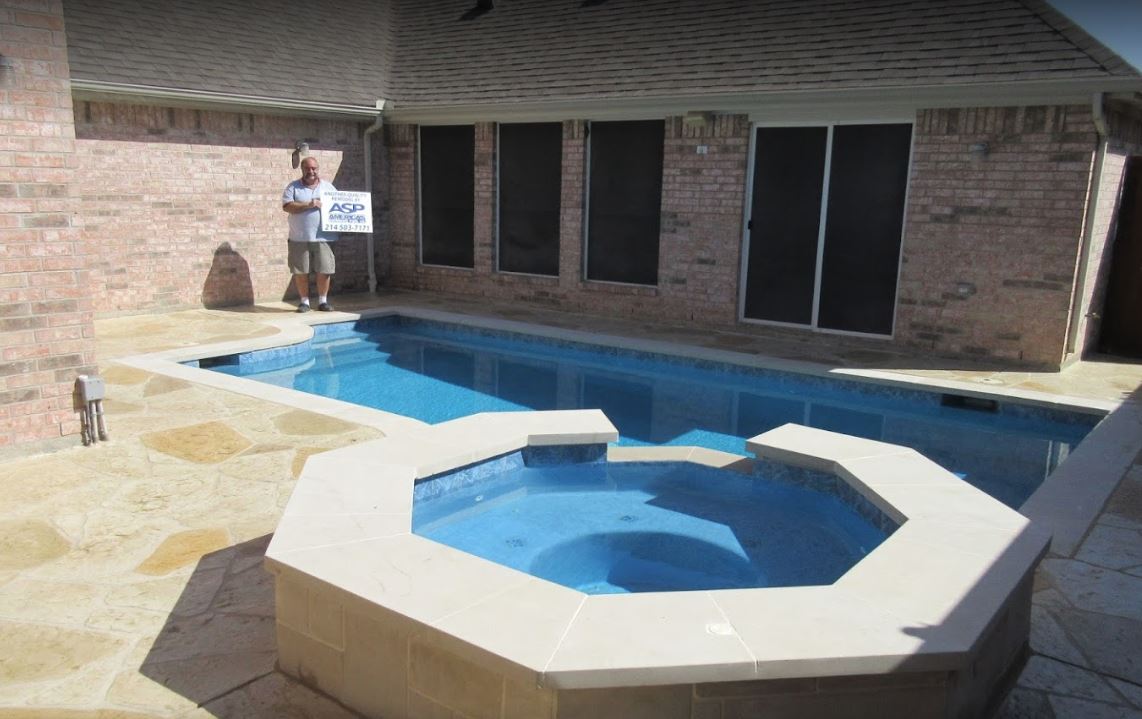Introduction
A pool is a big investment. When it comes time to remodel or renovate it, all pool owner’s want is a guide to take them through the process. If you should decide to re-plaster your pool, ASP Dallas desires to help educate you on what to expect. The greatest influence on the lifespan of a new plaster surface is the pool owner’s diligence in monitoring and controlling the pool’s water chemistry. We hope to give you a better understanding of the critical curing period of the plaster. Pool equipment must be fully operational before a pool remodel can begin.
The Nature of Water
Water is affected by temperature and various other variables including but not limited to chemistry, minerals, and environment.
It is essential to understand that pool water which is unbalanced and unstable will destroy a pool’s plaster finish whereas pool water which is balanced and stable will preserve a plaster’s finish.
Importance of Water to Plaster
Plaster is designed to be submersed in water to thrive and survive. Properly balanced water protects the plaster finish from all the ill- effects of its environment such as sun, weather, and debris; all of which can cause plaster to dry-out, stain and deteriorate. It is imperative that freshly plastered pool is filled with water as soon and as quickly as possible.
The Nature of Plaster
Since plastered pools and spas are, and need to be, constantly submerged in water they are affected by the water chemistry more than any other factor or variable. There is an interactive relationship between the mineral content of the plaster surface and the mineral content of the pool water.
Over time, this reaction will have an impact on the condition and life of the plaster surface; in some cases these reactions cause minor cosmetic changes in the plaster, however, in many cases these reactions can have a more corrosive effect and cause the plaster to deteriorate needing to be replaced.
Plaster is the best material for the surface of a swimming pool because it is smooth to the touch and durable with a long-life expectancy, resistant to impact and abrasion, and readily repaired, cleaned and maintained among other features. However, it is not a perfect material and has traits which have a bearing upon the finish.
Plaster cannot achieve perfection because it is:
• Compounded from raw mined minerals (cement, marble dust and aggregates)
• Applied over materials (plaster and concrete) which are inconsistent in surface, shape, and condition
• Hand-troweled to a smooth surface, it may still exhibit inconsistencies in its finish due to the handcrafted nature of the application and uncontrolled environment
• Not purely white and inherently inconsistent in color tone
Your new plaster can:
• Look mottled (blotchy) and streaky for a period as it cures long-term (10-12 months)
• Have small cracks known as “checks”, “shrinkage” or “crazing” which pose no threat to plaster longevity
• Be susceptible to stains, discoloration, and spotting caused by foreign impurities, environmental debris, water chemistry, etc.
• Roughen if not properly brushed, and can deteriorate if the water chemistry is ignored or unstable
 Delamination
Delamination
Delamination is a condition exclusive to plaster. It is a condition whereby the existing plaster has become separated from the pool shell. While evidence of such can exist as bubbles, cracks, delamination may not be discovered until the pool has been emptied and the surface has been inspected and tap-tested listening for a hollow sound. Upon discovery, the hollow plaster spots need to be excavated and then patched with new plaster, in the case of repair or entirely plastered, in the case of renovation,



